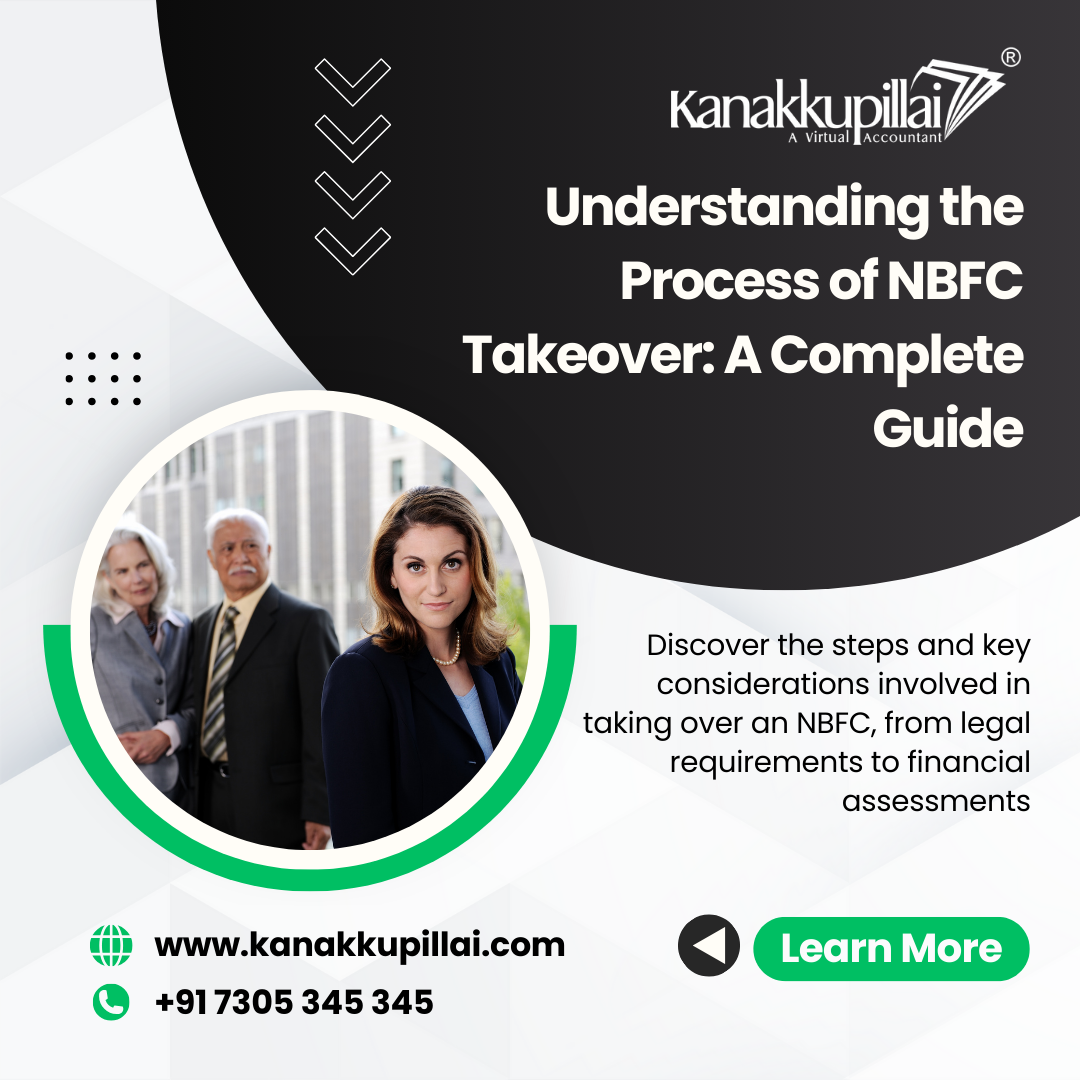Introduction
takeover of the NBFC Non-Banking Financial Company (NBFC) sector in India plays a crucial role in providing financial services, especially to underserved markets. As the financial landscape evolves, the NBFC takeover process has gained significant attention. This guide explores the intricacies of NBFC takeovers, including the reasons behind them, the procedural steps involved, regulatory requirements, and potential challenges.
What is an NBFC Takeover?
An NBFC takeover checklist refers to the acquisition of one NBFC by another. This can occur through various means, such as purchasing shares, mergers, or other arrangements that result in a change of control or management of the target NBFC. The Reserve Bank of India (RBI) regulates this process to ensure stability and compliance within the financial sector.
Reasons for NBFC Takeover
Several factors drive NBFC takeovers, including:
- Expansion of Business Operations: Acquiring another NBFC can facilitate growth and market penetration.
- Access to New Markets: It allows the acquiring company to enter new geographical or customer segments.
- Diversification of Product Portfolio: Companies may seek to broaden their offerings through the acquisition of specialised services.
- Economies of Scale: Merging operations can lead to cost efficiencies and improved operational performance.
- Acquisition of Expertise: Companies may look to gain specialised skills or technology through an acquisition.
- Regulatory Compliance: Some acquisitions may be driven by the need to meet regulatory requirements or guidelines.
The Process of NBFC Takeover
The NBFC takeover process involves several essential steps to ensure a smooth transition and compliance with regulations:
Step 1: Due Diligence
Before initiating a takeover, the acquiring company must conduct a thorough due diligence exercise. This assessment includes evaluating the target NBFC's financial, legal, and regulatory aspects.
Step 2: Regulatory Approvals
The acquiring NBFC must seek necessary approvals from the RBI and other relevant authorities. This step is critical to ensure compliance with the regulatory framework governing NBFC operations.
Step 3: Memorandum of Understanding (MOU)
Once due diligence is complete, the parties involved must sign a Memorandum of Understanding (MOU). This document outlines the responsibilities and requirements of both the acquirer and the target company.
Step 4: Share Purchase Agreement
The next step involves entering into a share purchase agreement or other acquisition agreements with the target NBFC. This agreement details the terms and conditions of the acquisition.
Step 5: Public Disclosure
If management or control changes, a public notice must be published in at least one leading national and one local newspaper at least 30 days before the planned sale of shares or transfer of control.
Step 6: Completion of Transaction
After fulfilling all regulatory requirements and completing necessary disclosures, the transaction can be finalised, resulting in the change of control or management of the target NBFC.
Regulatory Requirements for NBFC Takeover
The RBI has established specific guidelines that must be adhered to during the takeover process:
- Minimum Net Owned Funds: The acquiring NBFC must have a minimum net owned fund of INR 2 crore, while the target NBFC should not have negative net owned funds.
- Fit and Proper Criteria: The acquiring NBFC must meet the RBI's “fit and proper” criteria.
- Asset Classification and Provisioning Norms: The acquiring company must maintain the asset classification and provisioning norms of the target NBFC.
- Change in Shareholding: Any change in shareholding of 26% or more, or a change in management by 30% or more, is considered a takeover and requires RBI approval.
Challenges in NBFC Takeover
While the potential benefits of an NBFC takeover are significant, several challenges may arise during the process:
- Valuation and Negotiation: Accurately valuing the target NBFC and negotiating the acquisition price can be complex.
- Integration of Operations: Merging the operations, systems, and processes of the acquiring and target NBFCs can pose logistical challenges.
- Retention of Key Personnel: It is crucial to ensure that the target NBFC's key employees and customers remain engaged post-acquisition.
- Regulatory Compliance: Navigating the regulatory landscape and obtaining necessary approvals can be time-consuming.
- Risk Management: Managing the risks associated with the acquisition and ensuring a smooth transition is essential for success.
Conclusion
The process of takeover of NBFC is a multifaceted endeavour that requires careful planning, thorough due diligence, and strict adherence to regulatory requirements. Understanding the motivations behind takeovers, the procedural steps involved, and the potential challenges can help companies navigate this complex landscape effectively. As the NBFC sector continues to evolve, takeovers will remain a vital strategy for companies looking to expand their reach and enhance their competitive edge in the financial services market.





Comments